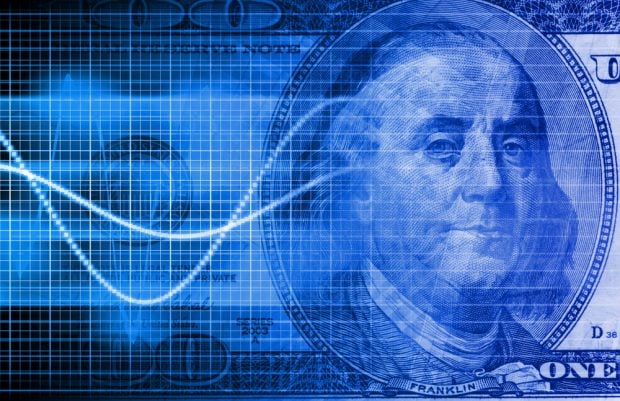 Credit/Shutterstock
Credit/Shutterstock
Credit unions are likely to realize higher interest margins and net income if the Fed continues on its path of rate cuts through next year, according to a report from the Kroll Bonding Rating Agency (KBRA).
The KBRA report released Monday compiled data for the 78 credit unions with more than $5 billion in assets as of June 30.
Recommended For You
The trends were similar to previous reports from other sources, but the agency connected the dots about what the numbers mean.
A major insight was that net income is likely to improve over the next year as net interest margins (NIMs) widen. This, of course, assumes the Fed continues a path of rate cuts that started with 50 basis points Sept. 18 that lowered the federal funds rate to 4.8%. Most members of the Federal Open Market Committee said they expect the federal funds rate to fall to 4.4% by year's end and 3.4% by the end of 2025.
The analysts wrote that earnings hit a low point in the fourth quarter, but have improved substantially in the first and second quarters. Net interest margin improved substantially in the second quarter, and are likely to continue to widen as costs from savings fall faster than income from loans.
Loan growth through the rest of this year will remain "muted," they wrote.
"NIM expansion will further support the industry's earnings power, which will drive future earnings stability. A more stable earnings profile would provide a stronger position to absorb possible increases in credit losses, should the consumer continue to be pressured from interest rates and inflationary stresses," the analysts wrote.
But loan quality might also have hit bottom, and be poised to improve, the analysts wrote.
Most of the group's portfolio is made up of loans carrying variable rates or repricing within five years.
During the Fed's period of raising rates from 2022 to 2023, credit unions had to fund growth with wholesale borrowing and defend their deposits by paying members more through higher-yielding money market funds and time deposits. Borrowing peaked in December and has since been ebbing.
The KBRA analysts found net charge-off rates fell when the federal funds rate was cut during the pandemic, and rose with the recent round of increases, peaking in the first quarter.
"In past credit cycles, the main driver of consumer loan delinquencies and non-performing assets in CU markets has been the unemployment rate. However, for the current cycle, unemployment has remained relatively low, and inflationary pressures appear to be the primary force behind recent asset quality performance," they wrote.
"KBRA expects the decline in interest rates to have a positive, albeit delayed, impact on credit quality for the consumer-oriented loan books of the large CUs," they wrote.
Most large credit unions realized lower or flat rates of delinquencies and charge-offs in the second quarter. Those credit unions appeared to be in good shape to manage non-performing loans through the rest of this year.
"Although asset quality will lag the benefit from the monetary easing cycle, KBRA expects further stabilization over the next year, which should bolster the CU industry," they wrote.
The report reviewed several credit unions with KBRA ratings, including GreenState Credit Union of North Liberty, Iowa with its $10.8 billion in assets and 450,119 members as of June 30.
GreenState suffered heavy losses as rising rates pulled the rug out from under the pandemic-era mortgage boom, but the KBRA analysts said they believe it is poised for better times as the mortgage market recovers.
GreenState earned a bare 0.17% return on average assets in the first quarter, but ROA improved to 0.91% in the second quarter.
Most of the gain came from a sizable release of loan loss provisions as loan quality stabilized, but GreenState also increased its net interest margin from 1.50% in the first quarter to 1.79% in the second.
"It appears the repricing of loans into higher rates is beginning to outpace members seeking higher interest rates for their deposit accounts," the analysts wrote.
"Also, we see the number one ranking in Iowa for mortgage production and the expansion into the Illinois market as a benefit to GreenState as interest rates moderate and the housing market heats up."
© Touchpoint Markets, All Rights Reserved. Request academic re-use from www.copyright.com. All other uses, submit a request to [email protected]. For more inforrmation visit Asset & Logo Licensing.







